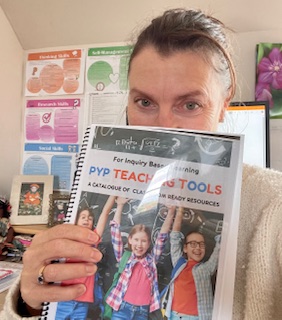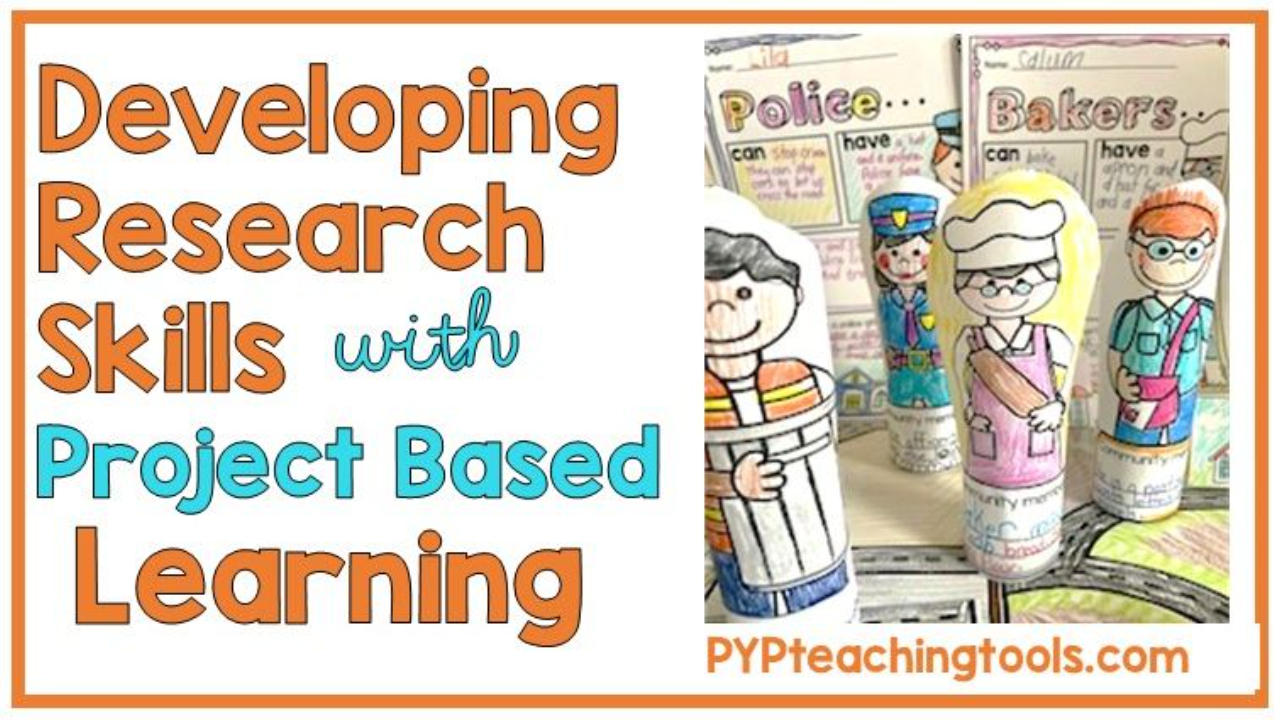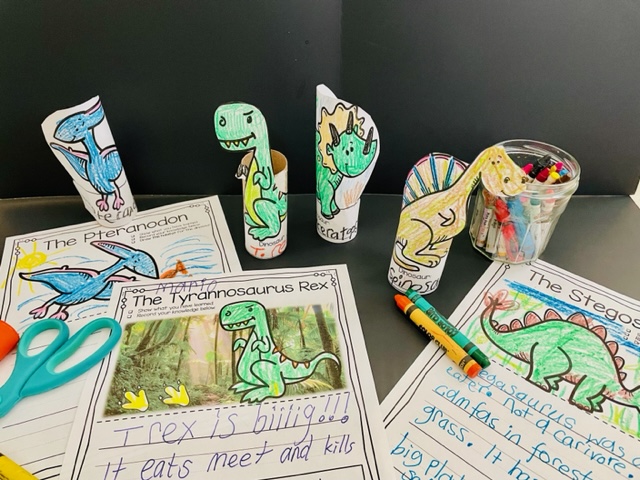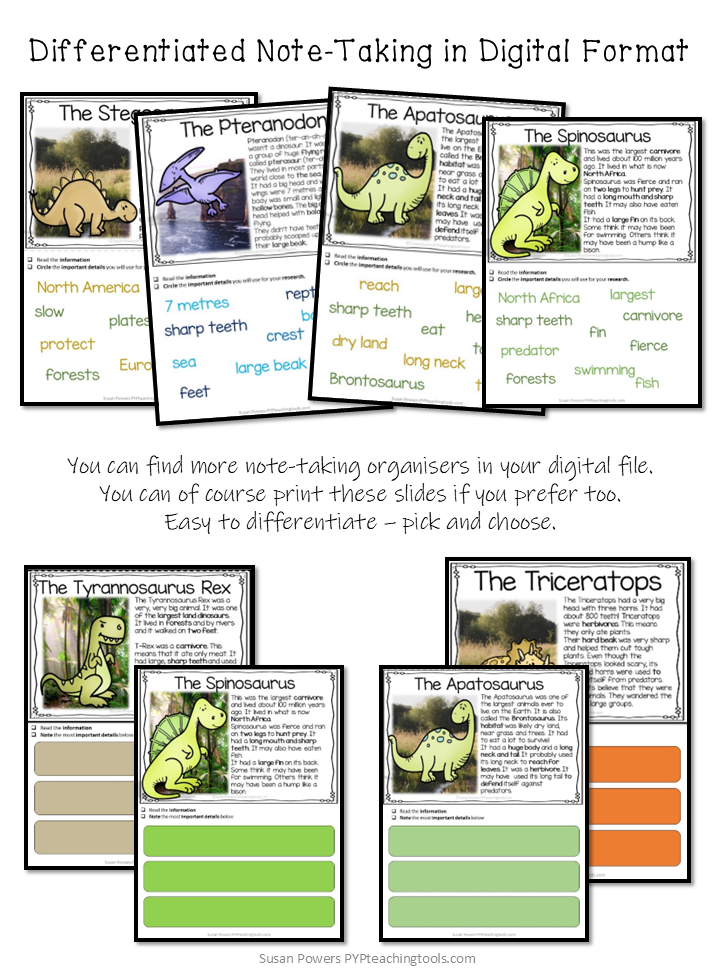With hands on and meaningful investigations through project based inquiry, we can engage our young inquirers and IB PYP learners in research focusing on concepts through implicit research skills. Take a look at the examples below, including the chart that demonstrates the flow through the inquiry and see how project based learning ties in beautifully with concept-based inquiry. The examples I'm sharing were designed as age-appropriate tools to support our youngest learners whilst diving into transdisciplinary projects that help to build thinking skills, research skills and all leading to deeper conceptual understanding.
A Fantastic Entry Point to Inquiry for Young Learners
Project based learning instantly grabs children’s attention because there is an exciting purpose. But behind the fascination lies a rich opportunity to deeply explore disciplinary concepts and develop all important thinking & research skills. The example Im sharing for the purpose of illustrating project based inquiry is from Sharing the Planet, as we explored the additional concepts of adaptation, habitat & investigation through the specified concepts of form, change and connection. And this was all done using dinosaurs as the hook! 🦖
In the IB PYP classroom, your students can investigate how living things adapt to their habitats and evolve over time through a context that captures them; something they care about.😊🦖
This kind of inquiry supports conceptual understanding (adaptation, habitat, living organisms) and the development of essential research skills, such as:
-
Asking good questions
-
Taking notes / recording data
-
Observing and comparing
-
Synthesising information
Using concepts also gives you flexibility across science, literacy and maths integrations.
How I designed the learning experiences: Research Skills Inquiry Project Dinosaurs: Adaptations
What it includes:
-
Front-loading provocations (images, text, maps)
-
Graphic organizers (e.g. SEE-THINK-WONDER style)
-
Research scaffolds (differentiated templates)
-
Opportunities for student choice throughout
-
Science experiments, text passages, images all designed to enhance investigation.
-
Final display or share-out (students curate a dinosaur “exhibit”)
-
Self/peer assessment prompts
This makes it easy to implement over 3–5 days, whether as a mini-unit or integrated into your existing science inquiry. You can find this complete inquiry-based project in my TPT store.
👉 Research Skills Inquiry Project: Dinosaurs' Adaptation & Habitat
Teacher's feedback:
“My students really enjoyed learning about different dinosaurs' adaptations and sharing their facts. The organization was simple and made introduction to research groups perfect.”
Suggested Structure for the Inquiry
No matter the concepts within your inquiry, the same structure can be used successfully. The example above shows how I used this same flow with the concepts of community, relationships and location, connecting with macro concepts of form, function and connection.
The chart below shows a possible flow using the dinosaurs' adaptation inquiry as an example. You can of course adapt to your planning and learners:
| Phase | Activities | Focus Concepts & Skills |
|---|---|---|
| Provocation & Wonder | Present images, fossils, dinosaur silhouettes. Use “What do you notice? What do you wonder?” prompts | Stimulate curiosity, introduce adaptation & habitat |
| Question Generation & Planning | Students in pairs/groups brainstorm questions (e.g. “How did this dinosaur’s features help it survive?”) | Formulating inquiry questions, choosing dinosaur |
| Research & Note-Taking | Use graphic organizers to record findings (features, habitat, adaptations, challenges) | Reading for information, identifying key details, note-taking |
| Comparisons & Data Analysis | Compare different dinosaurs: which features are similar/different? How do adaptations match habitats? | Conceptual thinking, classification, connection |
| Science Experiment / Hands-On Activity | E.g. simulate camouflaging or locomotion, test structure strength, etc. | Observing, experimenting, linking form to function |
| Synthesis & Display | Students create a dinosaur “exhibit” (poster, 3D model, digital slide) showing its adaptations, habitat, and how it lived | Communication, presentation, choice |
| Reflection & Assessment | Self/peer feedback: “What surprised me? What would I ask more about?” | Metacognition, reflection, ownership of learning |
Planning through Concepts & Curriculum Alignment
Specified Concepts / Additional Concepts
-
Change / Function / Connection
-
Adaptation
-
Habitat / Environment
-
Living things / Organisms
These concepts align well with PYP science units, especially under the theme How the World Works or Sharing the Planet. Many schools include animal adaptations or ecosystems / living things in their programme of inquiry.
Skills & Approaches to Learning (ATLs)
-
Research skills: question formulation, note-taking, synthesizing
-
Thinking skills: classification, patterning, comparing
-
Communication skills: presenting findings
-
Self-management: pacing research, reflecting
By giving students choice in which dinosaur they will study, you foster agency and ownership.
Why This Inquiry Works - What Makes it Engaging & Effective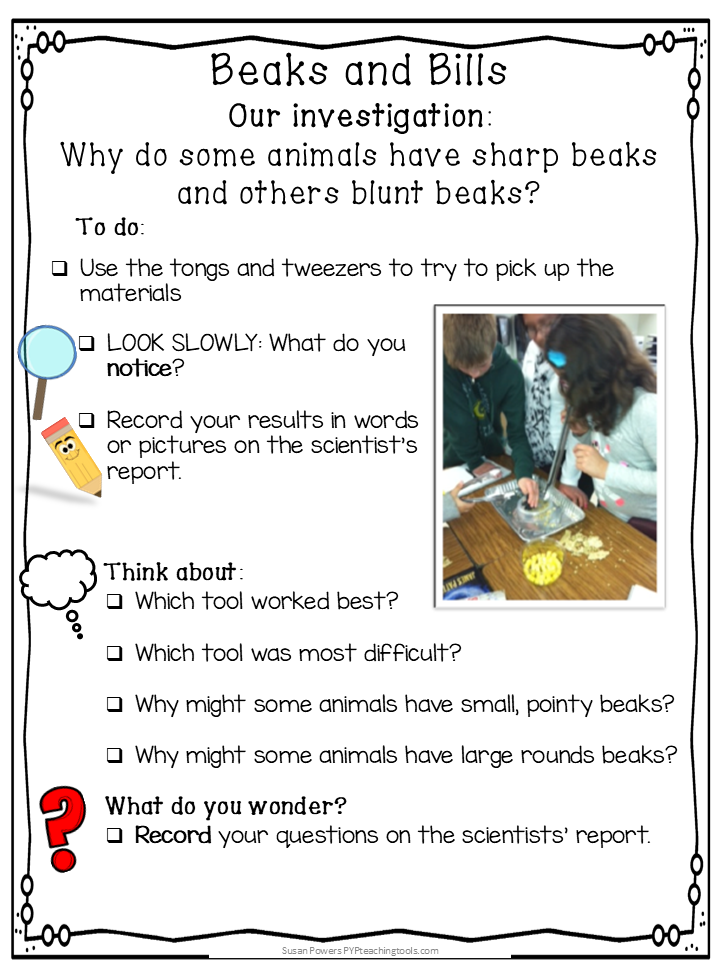
-
Authentic curiosity: Dinosaurs are naturally interesting, which helps lower the barrier to engagement.
-
Structured scaffolding: Supports are built in (templates, guided note forms) so that students don’t feel lost in research.
-
Student agency: Learners choose their dinosaur, their questions, and their final format, making learning more personal.
-
Interdisciplinary potential: You can link this to reading (informational texts), writing (reports), art (models or illustrations), and math (measuring or scaling dinosaur sizes).
-
Conceptual depth: Rather than just facts, students explore why features exist (causation) and how form-function relate.
-
Visible student thinking: Through graphic organizers and displays, you and students can see their evolving understanding.
Want more support?:
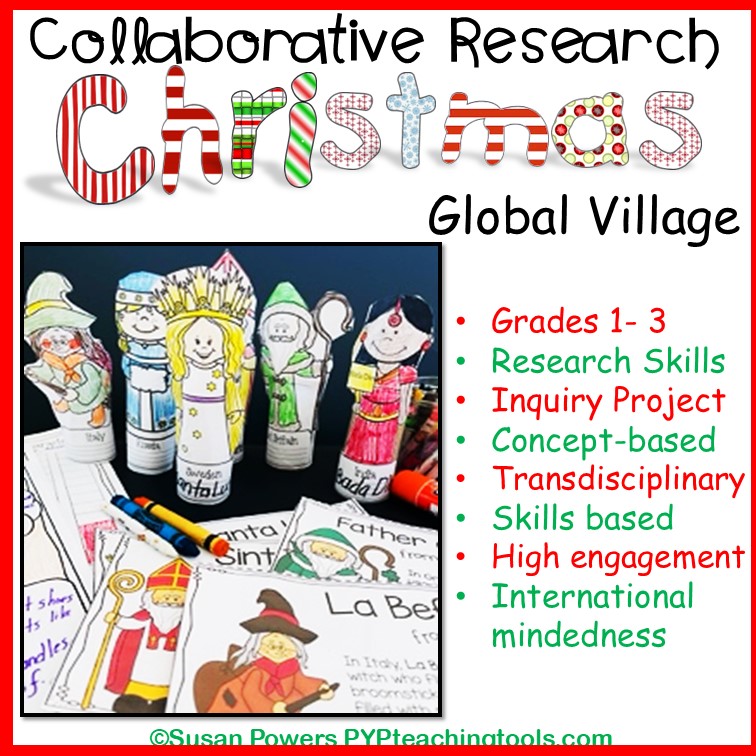 I have several of these inquiry projects ready-made to support facilitation of project based inquiry in your classroom and help your students build meaningful conceptual links alongside their research skills. I've done all the heavy-lifting for you with high-engagement tools to support your little learners. These project based learning activities supports the process of concept-based inquiry like a dream! Take a look below:
I have several of these inquiry projects ready-made to support facilitation of project based inquiry in your classroom and help your students build meaningful conceptual links alongside their research skills. I've done all the heavy-lifting for you with high-engagement tools to support your little learners. These project based learning activities supports the process of concept-based inquiry like a dream! Take a look below:
🔗 Get the IB PYP Research Skills Inquiry Project Dinosaurs: Adaptations
🔗Get the Research Skills Inquiry Project: Community, Relationships & Mapping Skills
🔗 Get the Create A Global Christmas Village Research Inquiry Project

